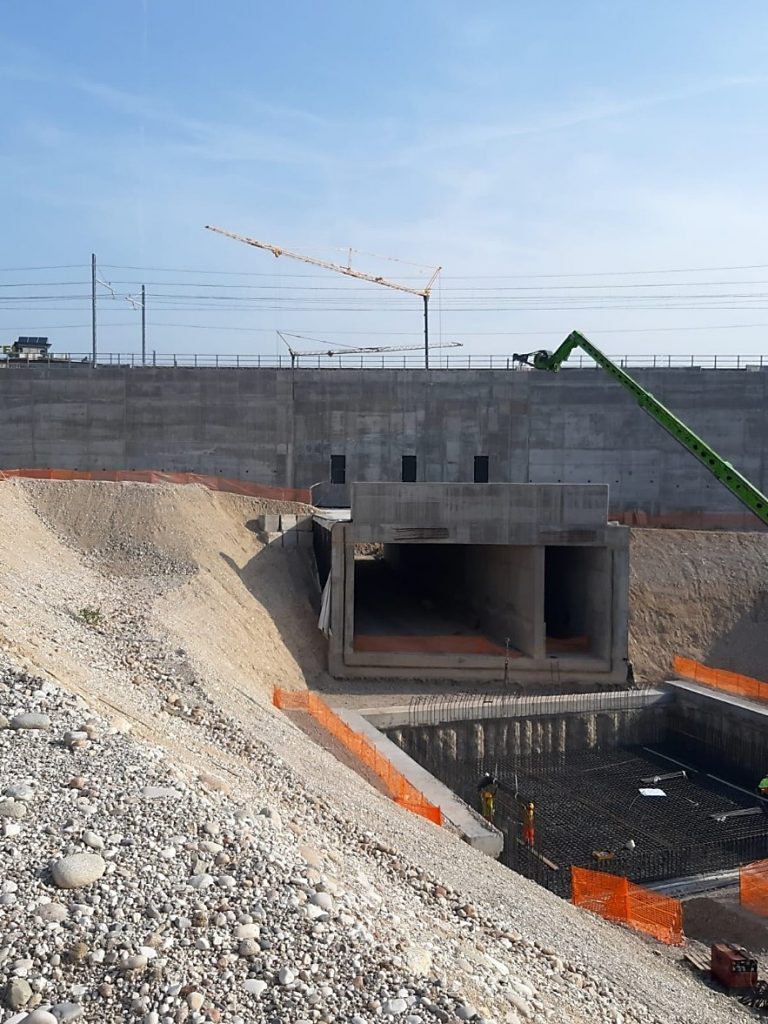AUTHOR: Ing. Marco Cappuccio
TUTORS: Prof. Ing. Giovanni Franchi
MASTER: Master in ” Project management in construction works with BIM ” a. a 2020/2021
Questo elaborato nasce dall’esperienza maturata in Italferr S.p.A. nelle vesti di assistente alla Direzione Lavori della linea ferroviaria AV/AC Brescia Est-Verona e si inserisce all’interno degli studi riguardanti la gestione di una commessa attraverso il Project Management, ovvero l’insieme dei metodi che analizzano le singole attività per individuare l’efficacia di un progetto.
Nella Trattazione si sono definiti gli elementi principali per la buona riuscita di un progetto, ovvero gli strumenti legati al Project Management e la costruzione dell’Opera attraverso un sistema di gestione in “assicurazione di qualità”. Per far ciò si è descritto il Sistema di Gestione Qualità dell’Opera ad onere del Contraente Generale, la Work Breakdown Structure (WBS) con la sua suddivisione in cinque macroattività e con le successive sub-attività e lavorazioni di dettaglio, la Work Breakdown Organization (WBO) con la suddivisione dei ruoli per le figure coinvolte ed, attraverso l’unione della WBS e dell’OBS, è stata definita la matrice delle responsabilità (RAM) mediante l’utilizzo del metodo RACI.
Il caso studio è rappresentato dal sottopasso di Sommacampagna, ossia il nodo infrastrutturale a livelli sfalsati che coniuga il trasporto su gomma e quello su rotaia.
La committenza dell’Opera è affidata ad RFI – Rete Ferroviaria Italiana S.p.A., facente parte del Gruppo Ferrovie dello Stato Italiane; la progettazione esecutiva e la realizzazione dell’opera invece, è stata affidata al Consorzio Cepav due – Consorzio Eni per l’Alta Velocità e la Direzione Lavori e l’Alta Sorveglianza sono affidate ad Italferr del Gruppo Ferrovie dello Stato Italiane.
Nei grandi cantieri come quello in esame, caratterizzati da tempi di realizzazione stingenti in quanto realizzati per fasi strettamente connesse e propedeutiche tra loro, risulta fondamentale e decisivo per un’impresa organizzare al meglio il cantiere gestendo i tempi e le risorse.
A tal proposito è stato realizzato il diagramma di Gantt. Per l’applicazione di tale strumento sono state selezionate ed inserite le varie attività e, individuando le risorse necessarie e la sequenza delle fasi lavorative, si è definito il cronoprogramma ottimale per la realizzazione della WBS SLZ1A.
Sono state quindi inserite quattro milestone per le fasi produttive più importanti che rappresentano altresì i punti cardine per definire il percorso critico atto a verificare il corretto andamento dell’esecuzione dei lavori nei tempi stabiliti.
Lo scopo principale di questo lavoro di Tesi verte quindi sull’applicazione degli strumenti e dei metodi del Project Management all’interno di un ciclo produttivo inerente alla realizzazione di un’opera. Da questo caso studio si può quindi affermare l’importanza del project management ed il suo indispensabile utilizzo nella gestione ed ottimizzazione delle risorse del Cantiere; risulta altresì chiaro come una più solida interrelazione tra gli aspetti gestionali e qualitativi dell’opera porterebbe ancor più all’efficientamento dell’iter produttivo del settore delle costruzioni.
FOR INTERNATIONAL STUDENTS:
This paper comes from the experience gained in Italferr S.p.A. as assistant to the Construction Supervision of the AV/AC Brescia Est-Verona railway line and is part of the studies concerning the management of a contract through Project Management, i.e. the set of methods which analyze the individual activities in order to identify the effectiveness of a project.
The discussion defines the main elements for the success of a project, namely the tools related to the Project Management and the construction of the Work through a “quality assurance” management system. To do this, the Quality Management System of the Work at the expense of the General Contractor, the Work Breakdown Structure (WBS) was described together with its subdivision into five macro-activities and with the subsequent sub-activities and detailed processes. The Work Breakdown Organization (OBS) with the subdivision of roles for the people involved was also described and, through the union of the WBS and the OBS, the matrix of responsibilities (RAM) was defined using the RACI method.
The case study is represented by the Sommacampagna underpass, that is the infrastructural node at staggered levels that combines road and rail transport.
The commissioning of the work is entrusted to RFI – Rete Ferroviaria Italiana S.p.A., part of the Ferrovie dello Stato Italiane Group; the executive design and construction of the work, on the other hand, was entrusted to the Cepav Due Consortium – Eni Consortium for High Speed and Construction Management and High Surveillance are entrusted to Italferr of the Italian State Railways Group.
In big construction sites like the one under investigation characterized by pressing construction times as they are carried out in phases that are closely connected and preparatory to each other, it is fundamental and crucial for a company to better organize the construction site by managing time and resources.
In this regard, the Gantt chart was created. For the application of this tool, the various activities were selected and entered and, by identifying the necessary resources and the sequence of the work phases, the optimal time schedule for the realization of the WBS SLZ1A was defined.
Four milestones were therefore included for the most important production phases which also represent the cornerstones for defining the critical path to verify the correct progress of the execution of the works within the scheduled times.
The main purpose of this thesis work is therefore to apply the tools and methods of the Project Management within a production cycle inherent in the construction of a complex work such as the Sommacampagna underpass. The Project management proved to be of great importance in the management and optimization of the various activities of the building site, but it is also clear how a greater interrelation between the management and qualitative aspects of the work would improve the efficiency of the production process in the sector of buildings.




